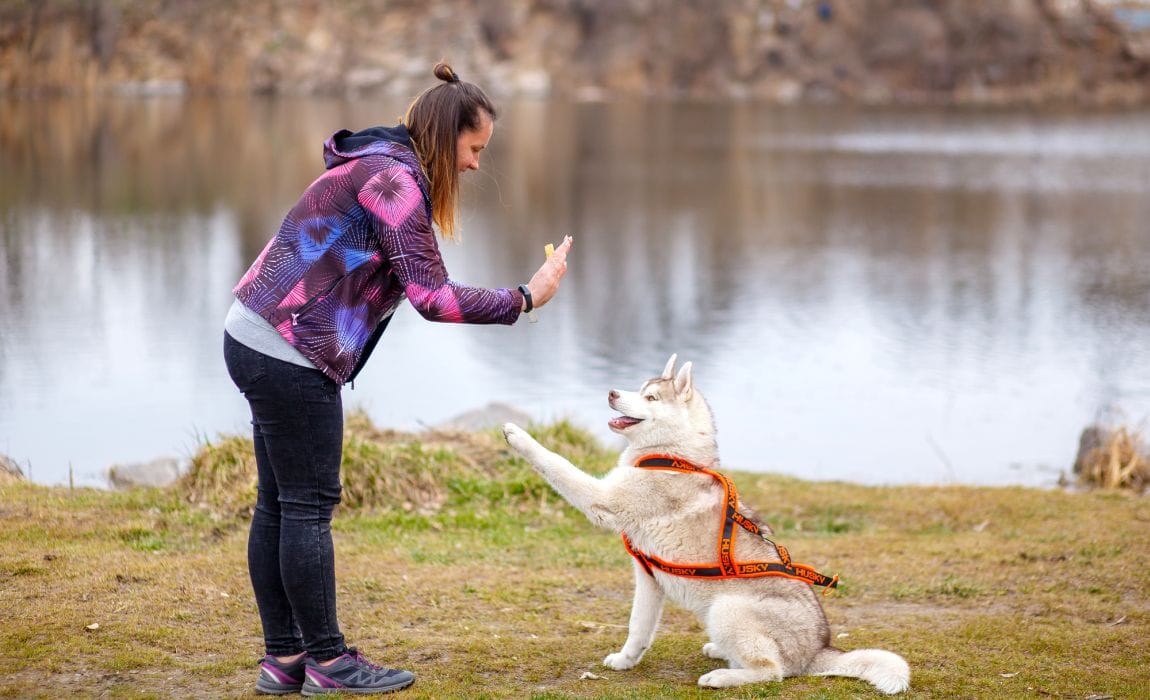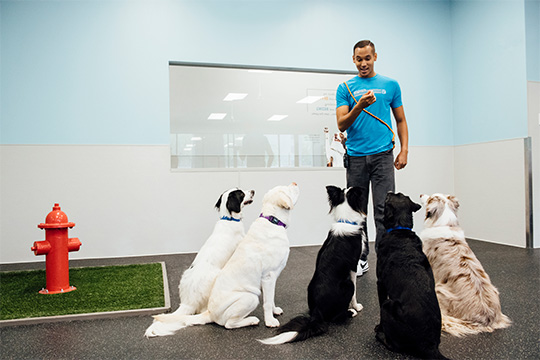Transform Your Dog's Behavior with These Proven Dog Training Methods
Top Pet Dog Educating Strategies Every Proprietor Should Know

Favorable Reinforcement Strategies
Making use of positive reinforcement techniques is vital for reliable canine training, as it fosters a trusting bond in between the fitness instructor and the canine. This technique concentrates on rewarding desirable actions as opposed to penalizing unwanted ones, developing an environment for finding out. Incentives can consist of deals with, appreciation, or playtime, which motivate canines to repeat the habits that gain them these benefits.

Furthermore, this strategy enhances the dog's enthusiasm for training sessions. They are much more engaged and receptive when canines link training with favorable experiences. Dog training. Beyond instant habits adjustment, favorable reinforcement urges a joint relationship in between the canine and fitness instructor, decreasing anxiety and worry
To maximize performance, it is vital to supply incentives quickly, ensuring the pet dog attaches the behavior with the reinforcement. In essence, favorable support strategies not only generate better-trained dogs but likewise promote a harmonious collaboration between pet dog and proprietor.
Clicker Training Method
The remote control training method is a very effective method that builds on the principles of positive support by adding a distinctive noise to mark preferred behaviors. This approach makes use of a small portable device that creates a clicking noise, allowing instructors to connect with their pets in a clear and immediate way. When a canine executes an actions that the owner desires to urge, the remote control is activated, adhered to by a reward, typically in the kind of treats or appreciation.
The key to effective remote control training lies in consistency and timing. It is crucial to click at the specific moment the wanted behavior occurs, making sure that the dog connects the noise with the activity and the succeeding reward. This approach not just improves communication however also promotes a stronger bond between the pet dog and the proprietor, as it encourages interaction and communication during training sessions.
Clicker training can be applied to a variety of commands and behaviors, from standard obedience to a lot more complex tricks. Its versatility and performance make it a favored strategy among expert instructors and animal proprietors alike, paving the means for a well-trained and receptive canine companion.
Chain Training Essentials
Reliable leash Website training is important for making certain a pleasurable and risk-free strolling experience for both dogs and their owners. A level collar might work for some pet dogs, while others might profit from a harness that reduces pulling.
Introduce your canine to the leash slowly, permitting them to discover it in a comfy atmosphere. This includes fulfilling your dog for walking beside you instead than drawing in advance.
If your canine begins to pull, quit strolling instantly. Additionally, technique numerous strolling environments to assist your pet dog adjust to diversions.
Regular practice will solidify your pet dog's understanding of chain decorum. Bear in mind that leash training is a continuous process; persistence and consistency will certainly yield the most effective outcomes, cultivating a favorable experience for both you and your canine companion.
Socializing Approaches
Socializing is a vital element of canine training that ought to ideally begin throughout puppyhood yet can be helpful at any age. Effective socialization helps dogs establish confidence and minimizes the probability of behavioral problems. To apply effective socialization approaches, subject your pet dog to a variety of atmospheres, people, and other animals.
Begin with regulated setups, such as see this puppy classes or organized playgroups, where young pets can communicate safely. Slowly present your canine to new experiences, consisting of different sounds, surface areas, and tasks. Make sure these encounters are gratifying and favorable to develop a complacency.
For grown-up pet dogs or those doing not have direct exposure, start with low-stress scenarios. Short, favorable communications with calm pets and friendly human beings can produce positive organizations. Utilize treats and appreciation to enhance preferable habits during these experiences.
Uniformity and Patience
Identifying the relevance of uniformity and patience in canine training is essential for attaining lasting outcomes. Inconsistent training can lead to confusion, making it difficult for the canine to comprehend actions or commands, eventually impeding progression.
Pets, like people, discover at their own rate. This cultivates a relying on relationship in between the pet and owner, urging an extra enthusiastic and ready student.
To grow uniformity and patience, establish a regular Source training regular, use the exact same commands, and make certain that all household members use the very same training principles - Dog training. By doing so, you create a stable atmosphere for learning, allowing your canine to establish and prosper into a mannerly companion
Verdict
In verdict, effective pet training strategies, such as favorable support, clicker training, and proper chain training, are essential for cultivating a healthy and balanced owner-dog partnership. Furthermore, executing socialization approaches and keeping consistency and perseverance throughout the training procedure adds considerably to a dog's total wellness. By incorporating these techniques, pet dog owners can help with the development of well-adjusted, loyal pets, ultimately boosting the lifestyle for both the canine and the proprietor.
Among the most popular techniques are positive support, remote control training, and leash training, each offering distinct advantages that contribute to a mannerly pet. As we check out these fundamental methods, it becomes noticeable that mastering their subtleties can considerably impact the training experience and the pet dog's overall habits.Making use of positive reinforcement strategies is crucial for effective pet dog training, as it cultivates a trusting bond between the dog and the fitness instructor.In verdict, effective canine training methods, such as favorable reinforcement, remote control training, and correct chain training, are important for promoting a healthy and balanced owner-dog relationship. By incorporating these approaches, dog owners can assist in the growth of well-adjusted, loyal animals, inevitably boosting the quality of life for both the proprietor and the canine.